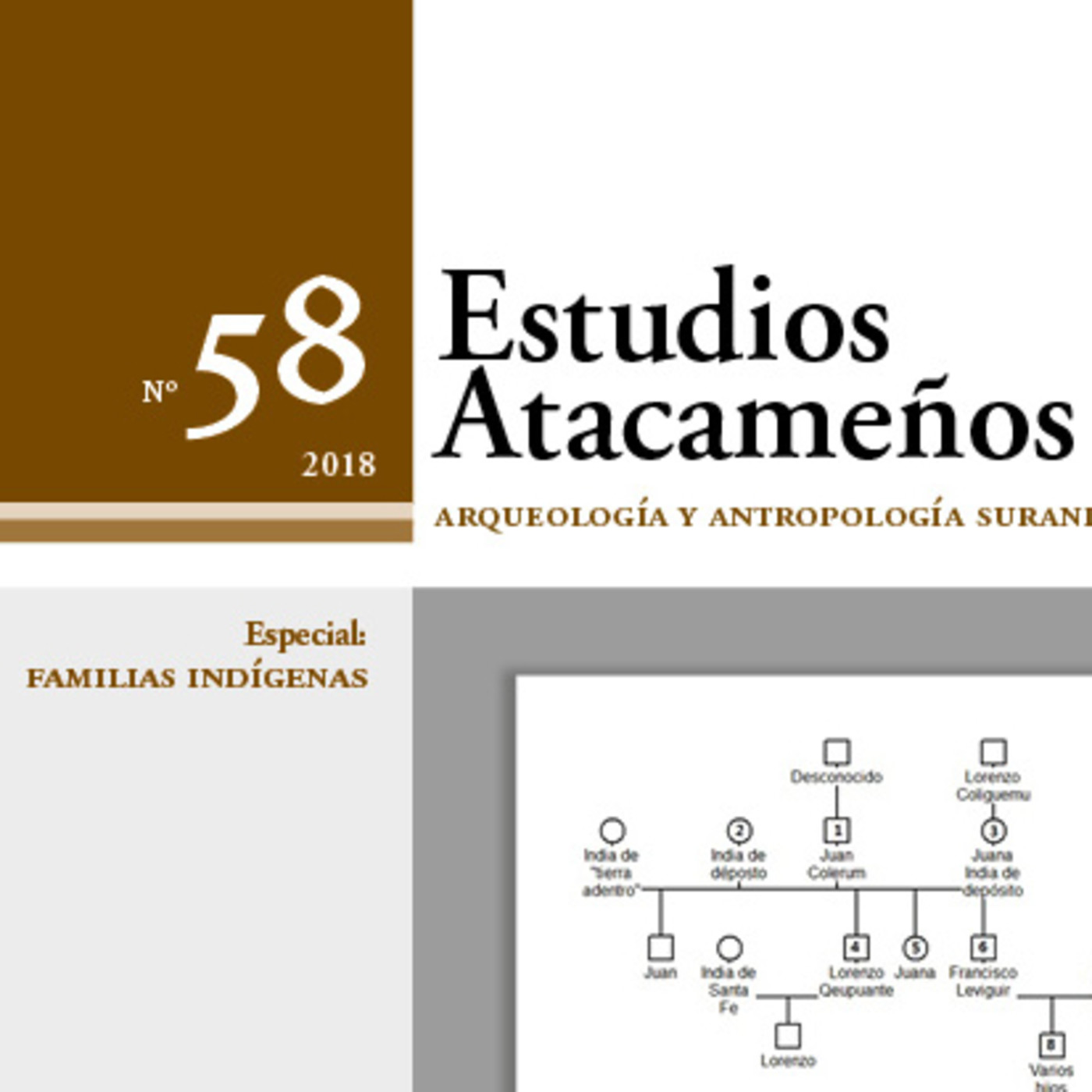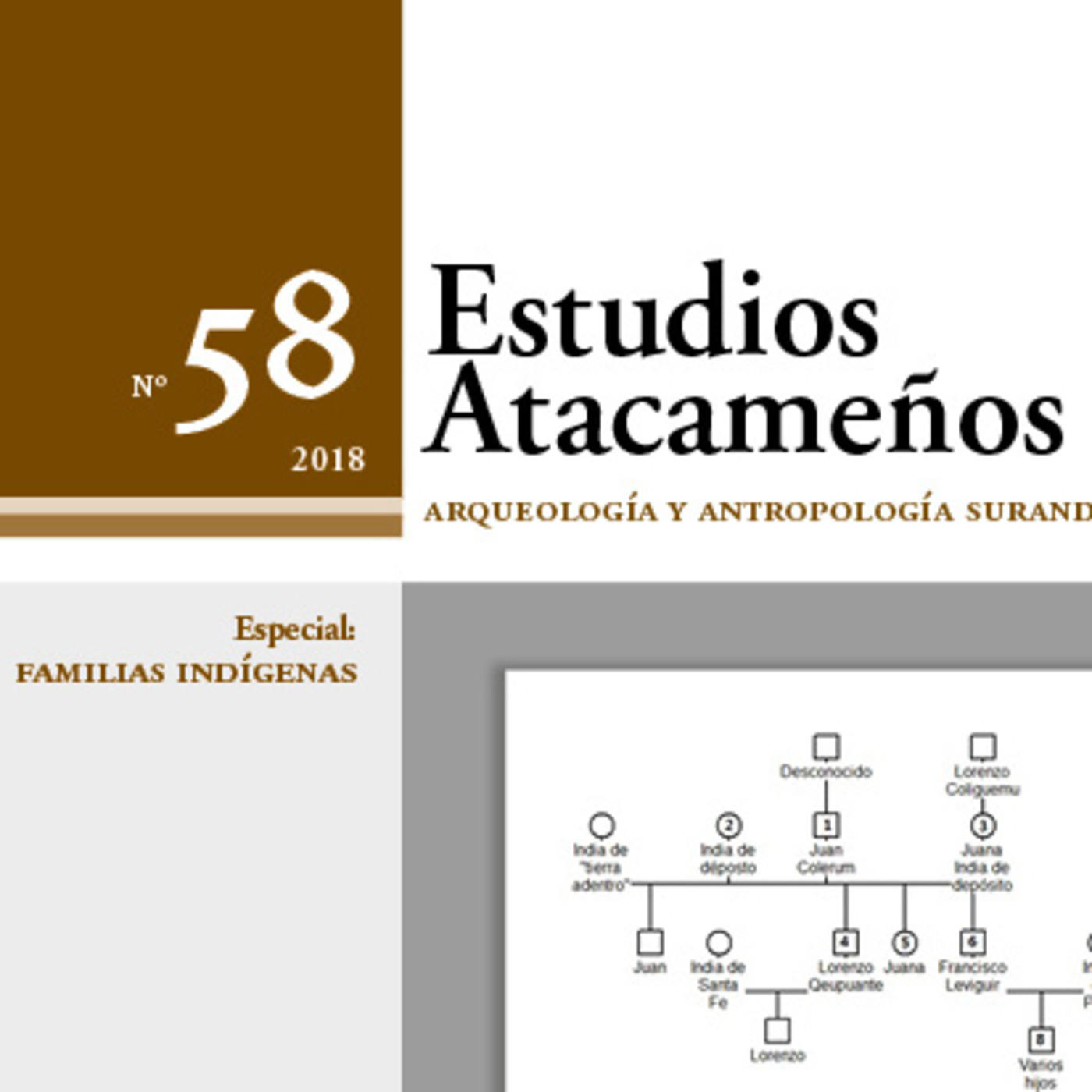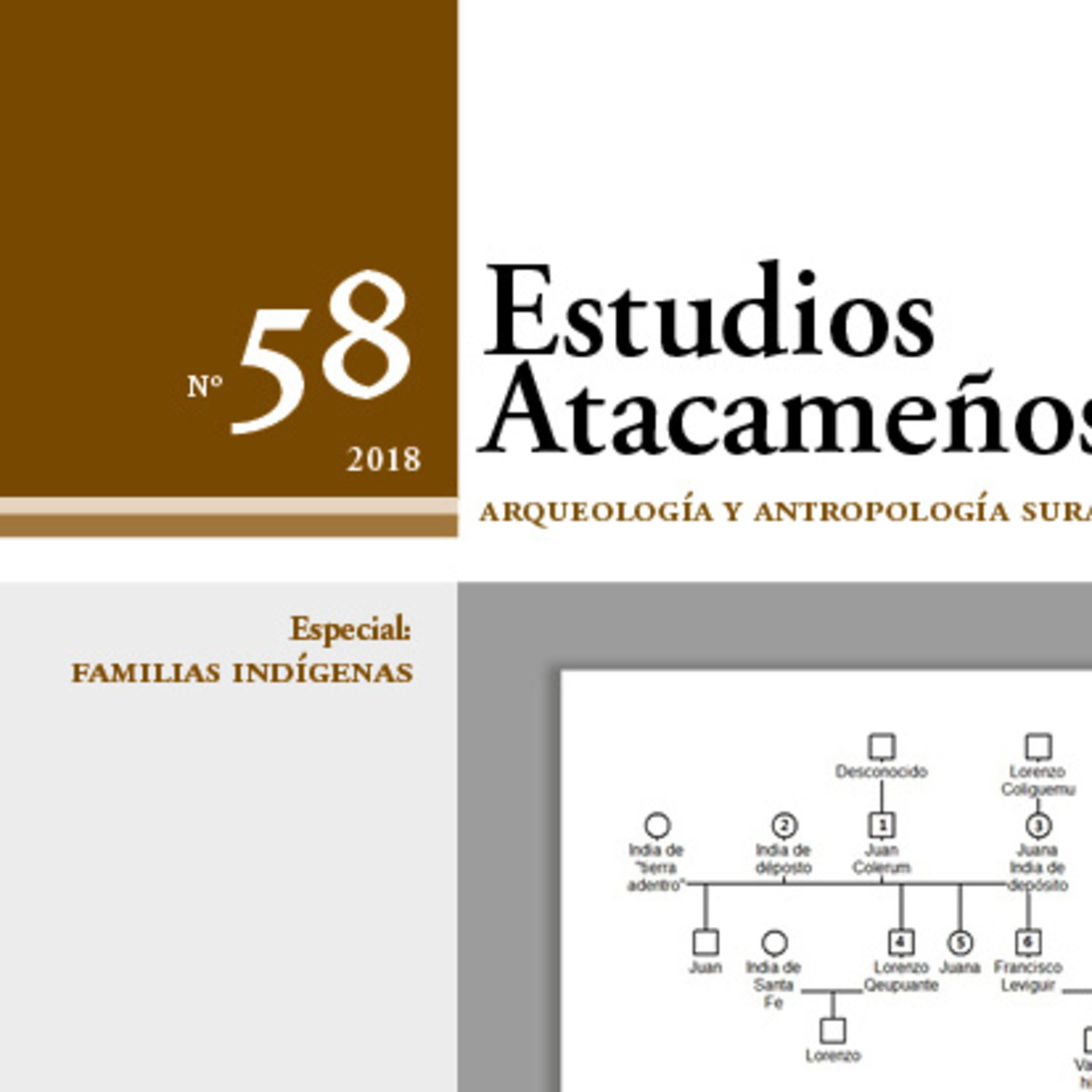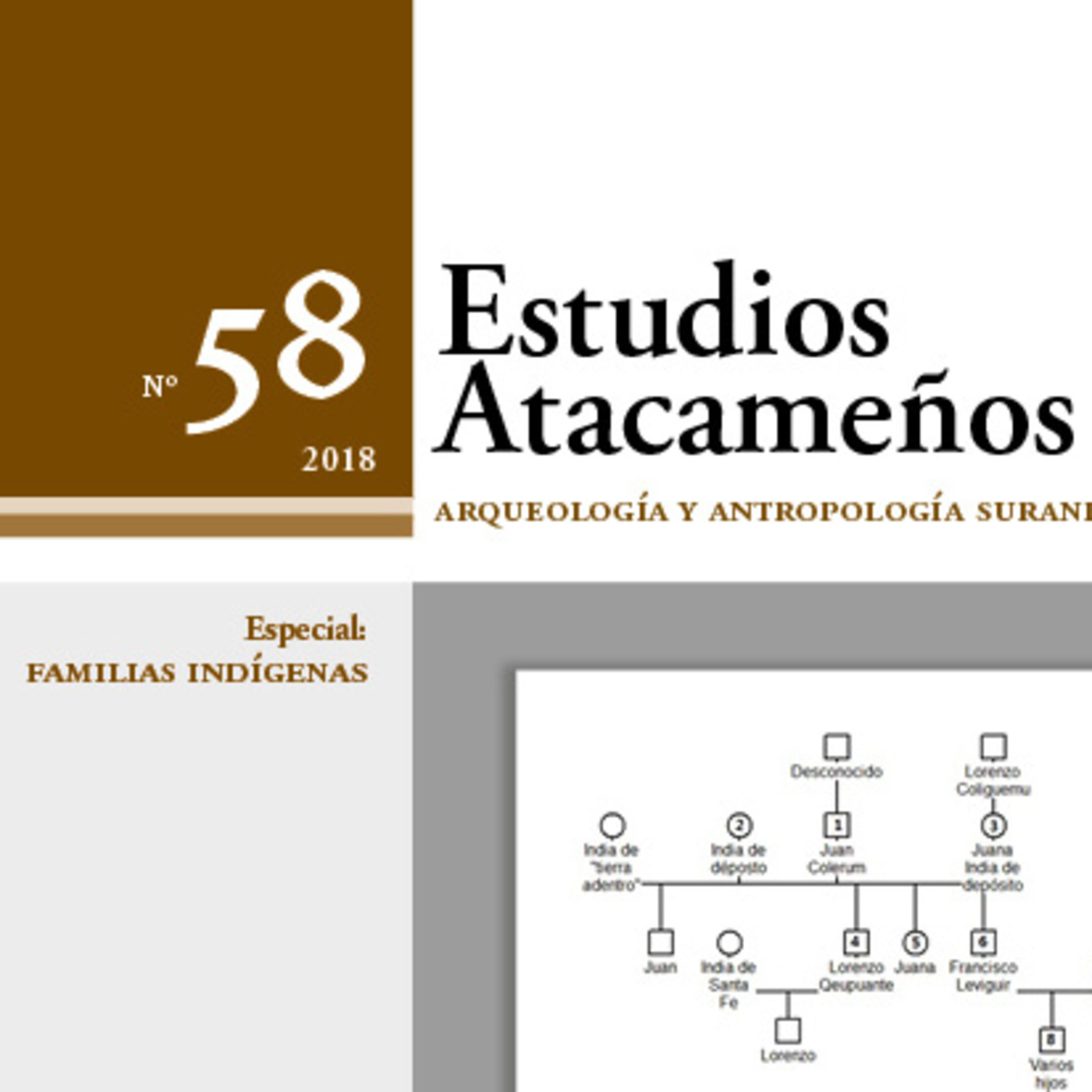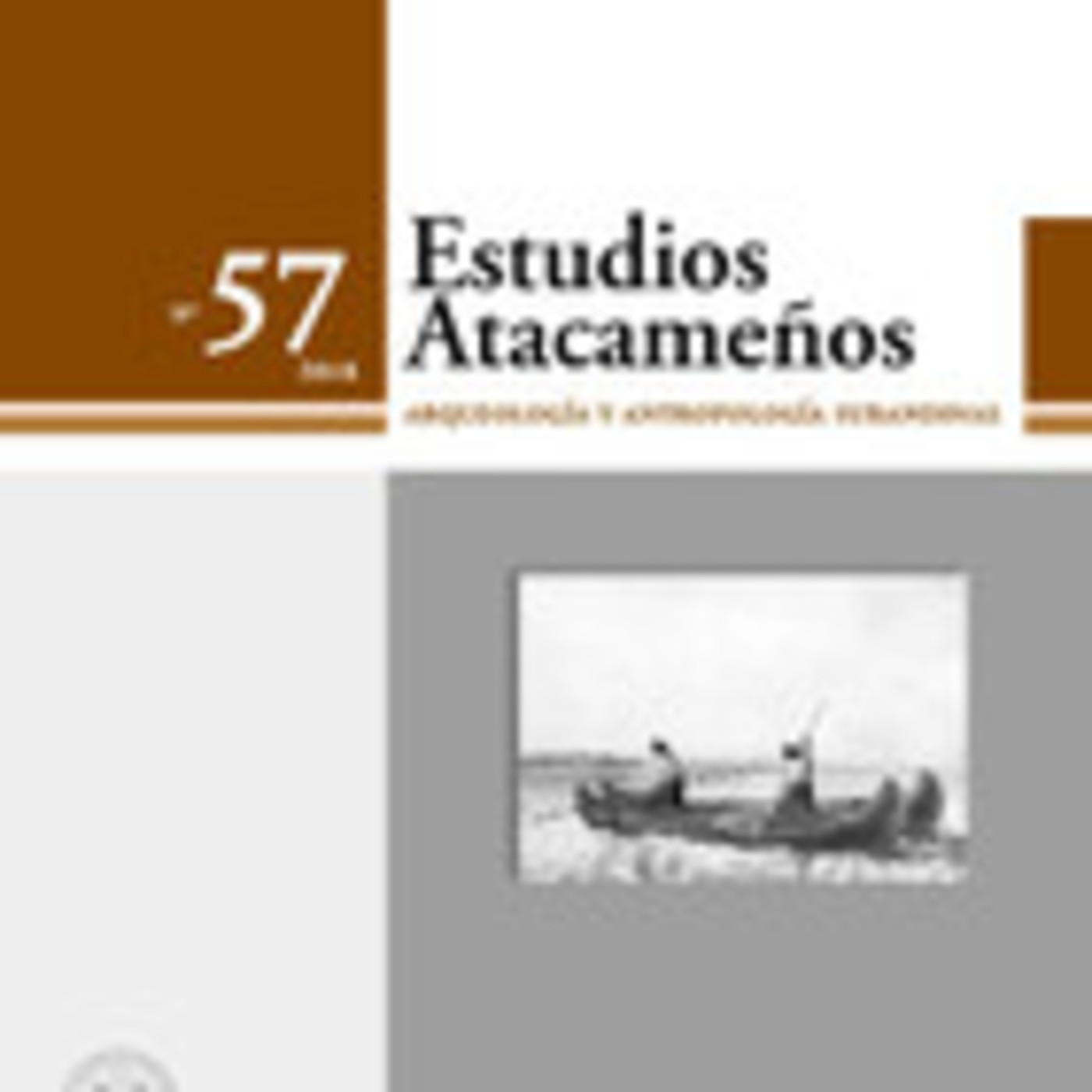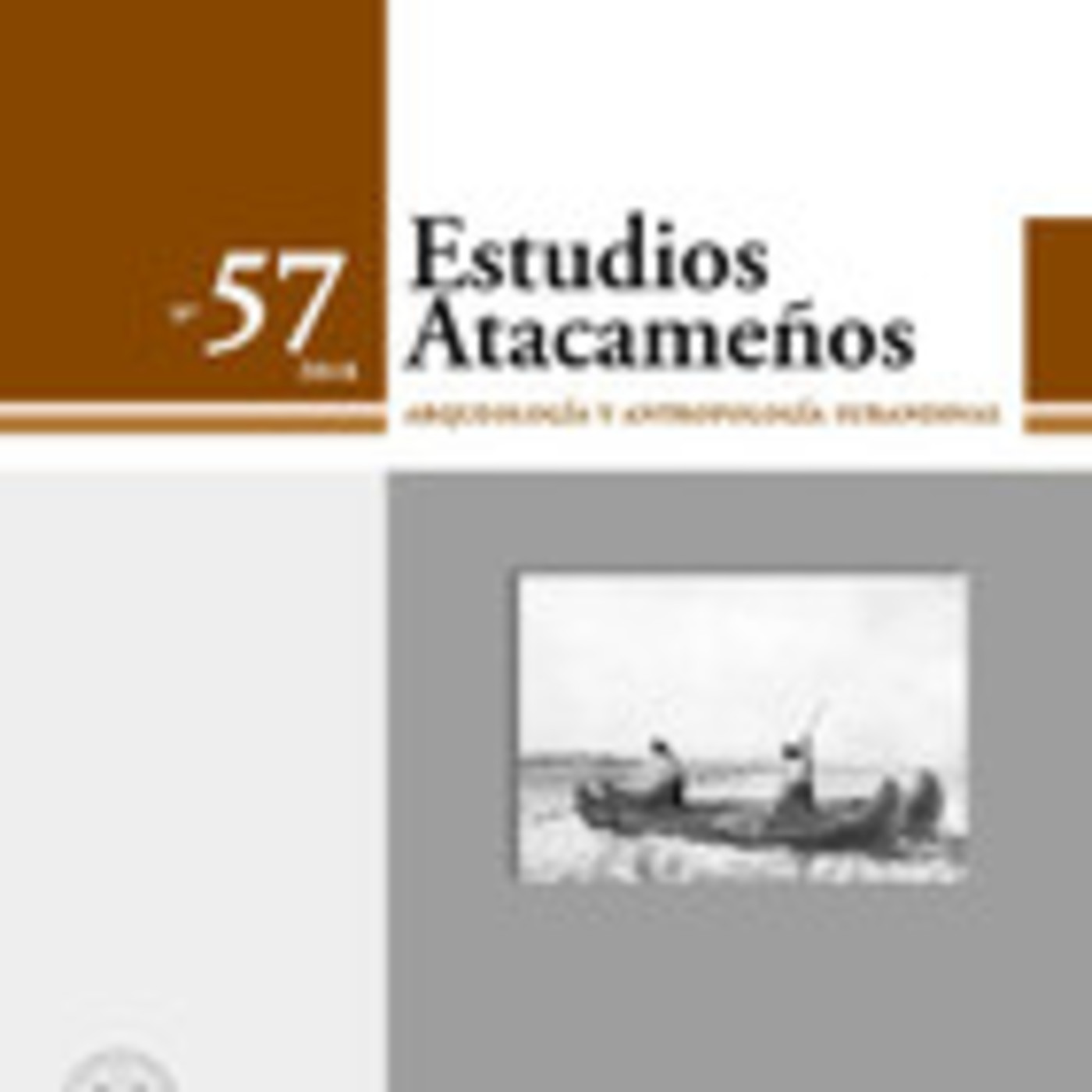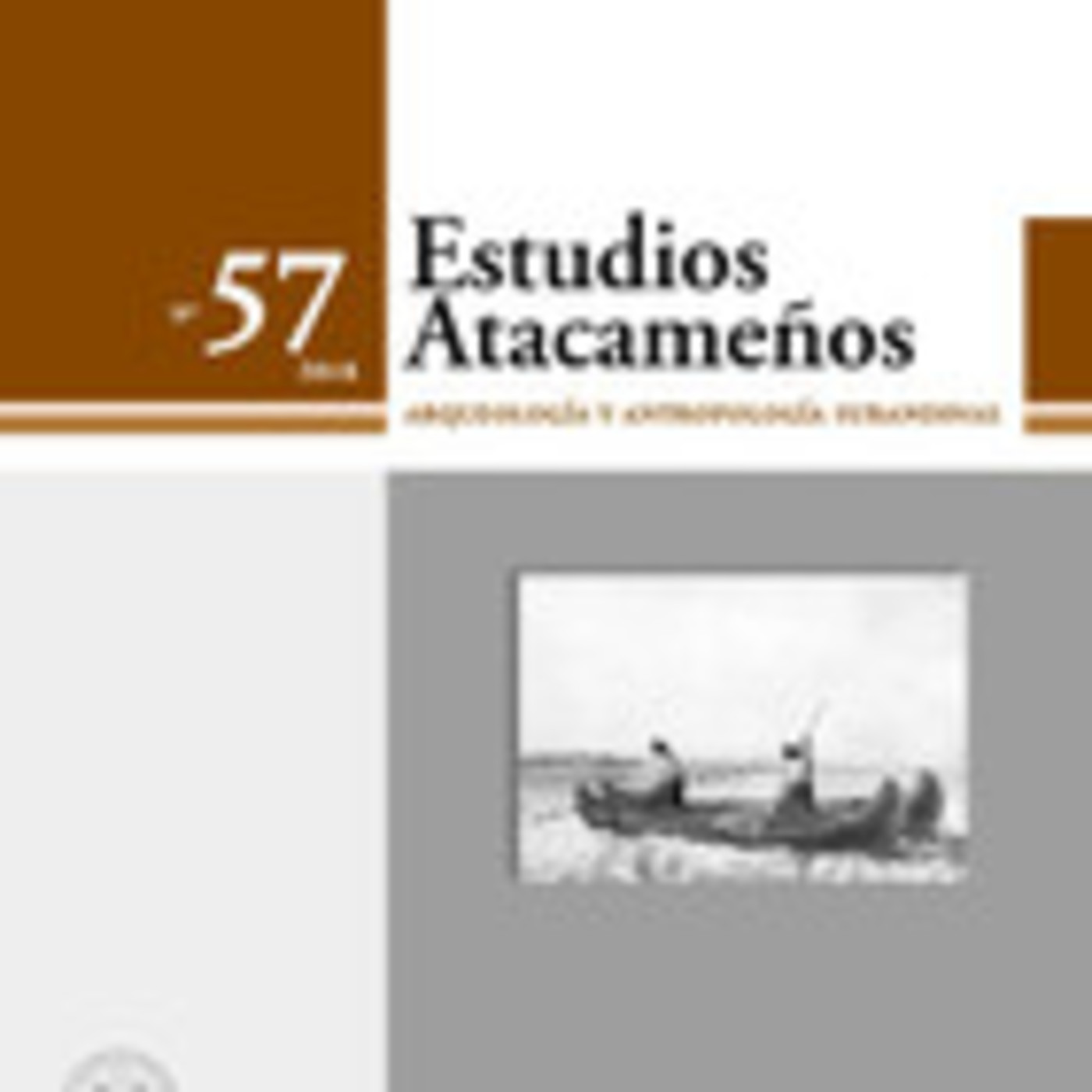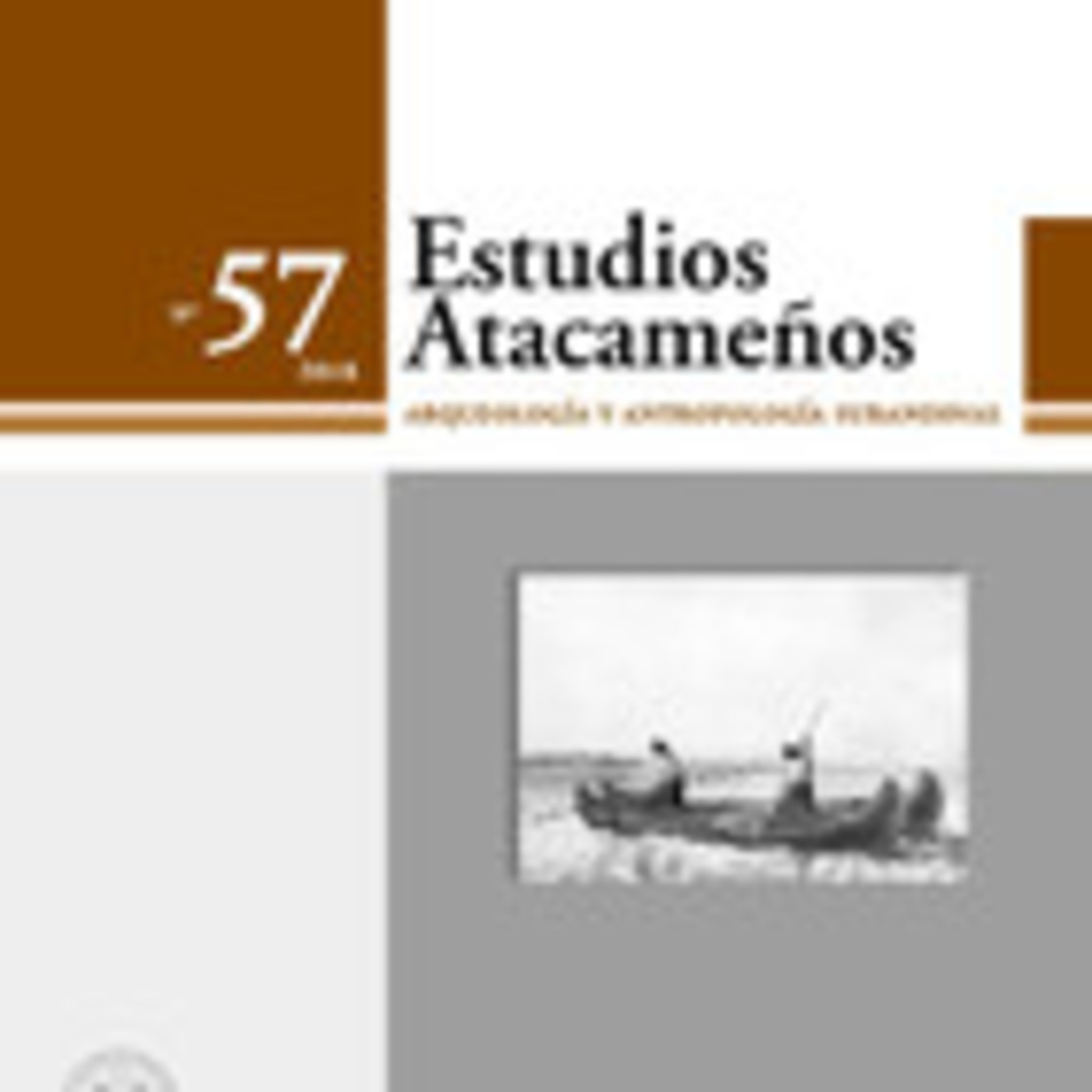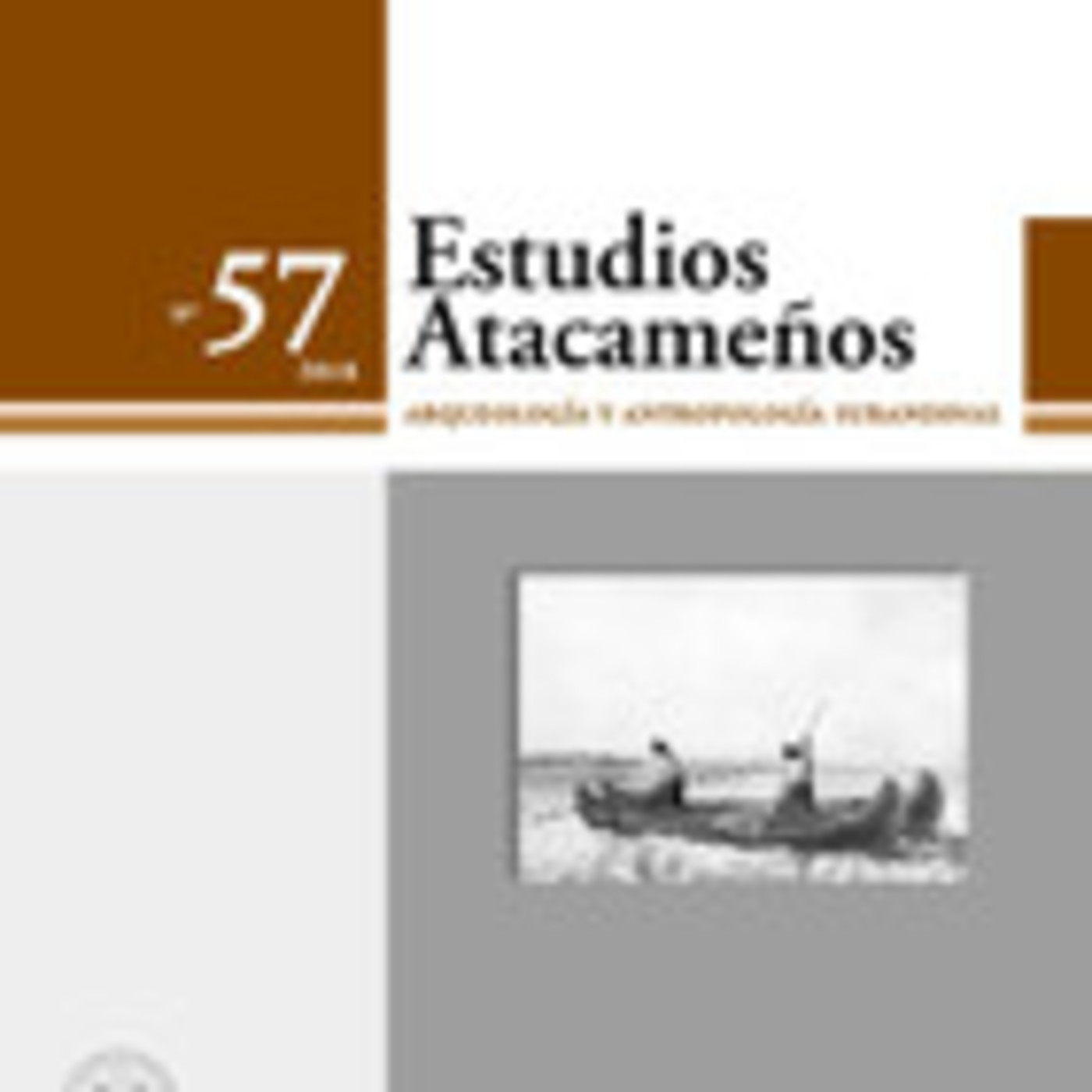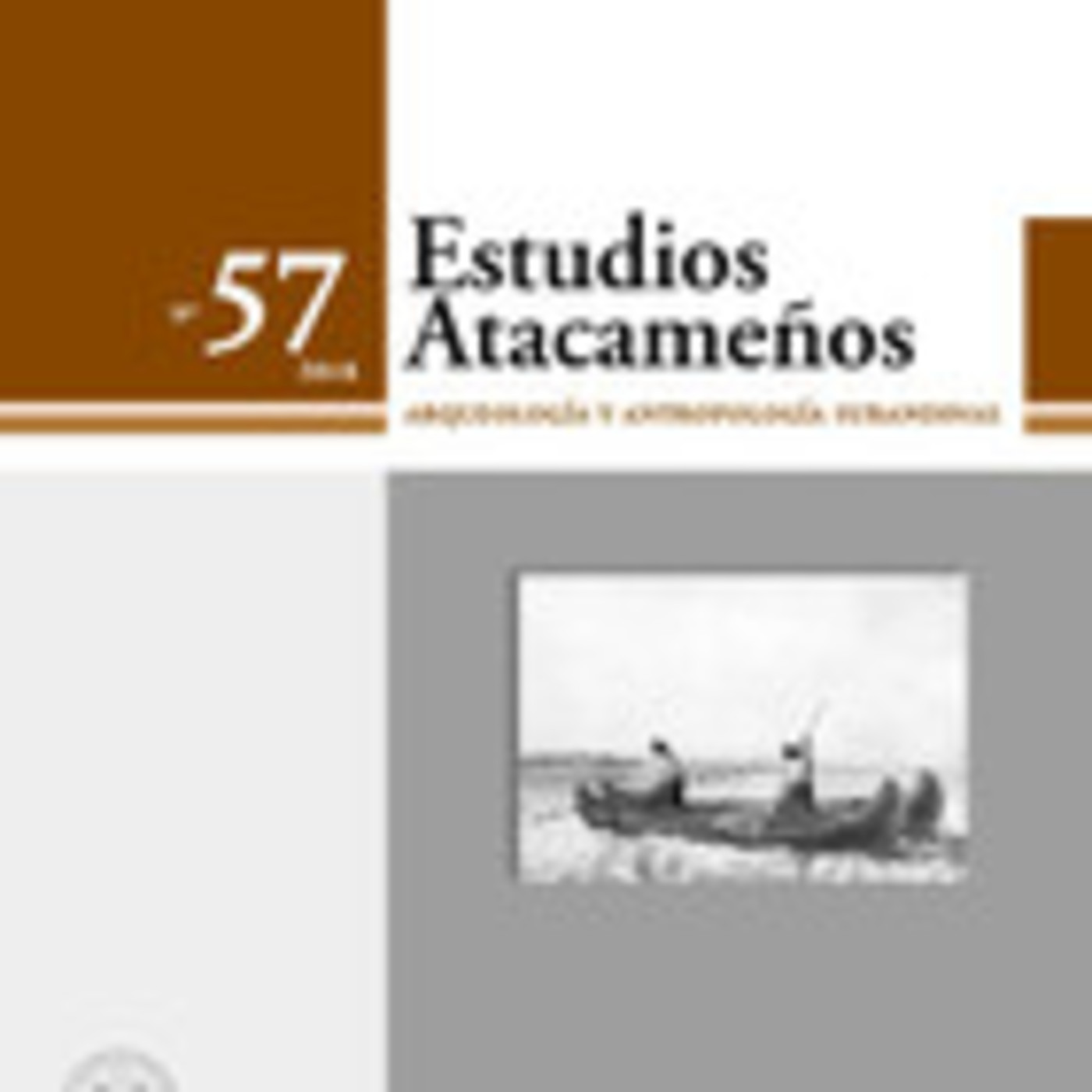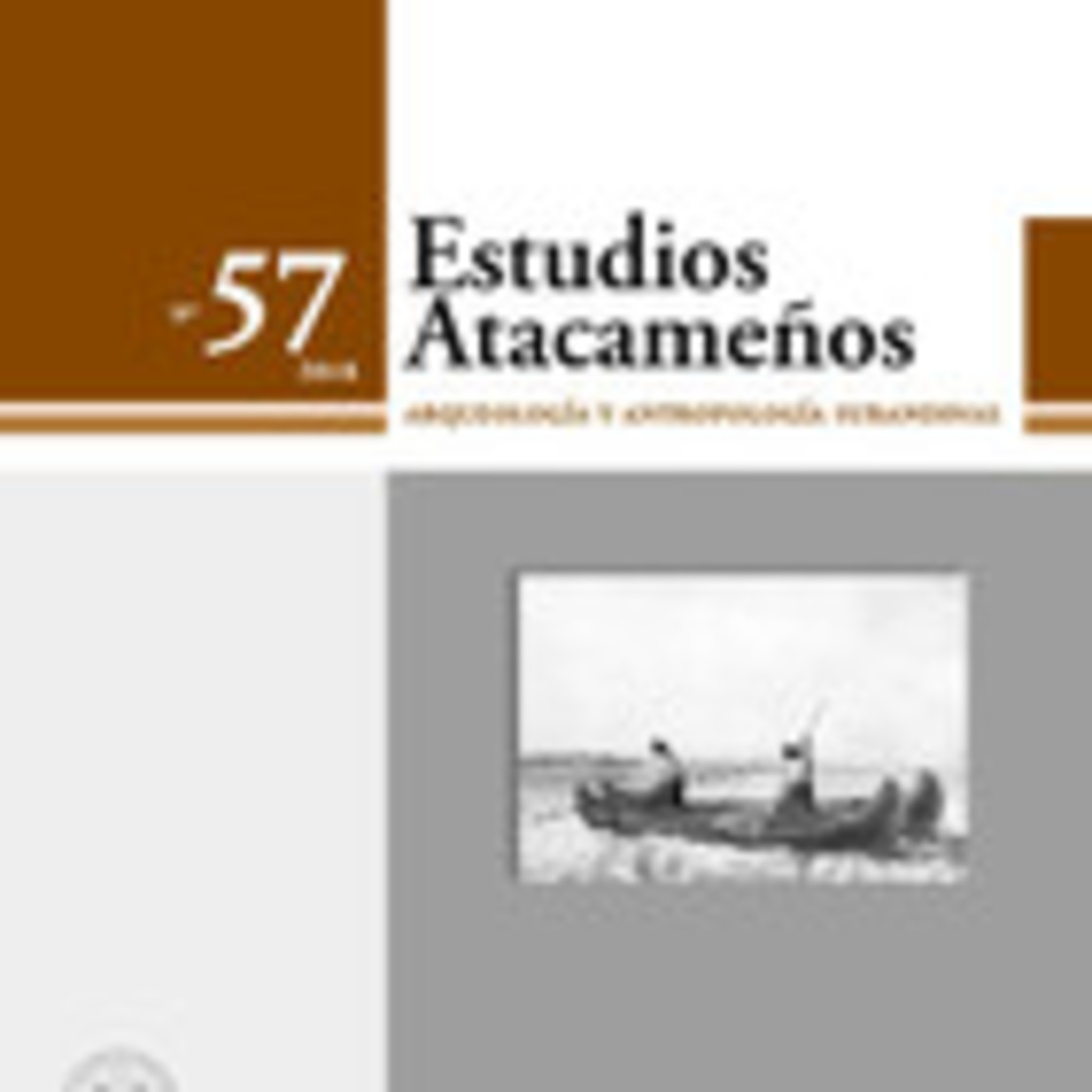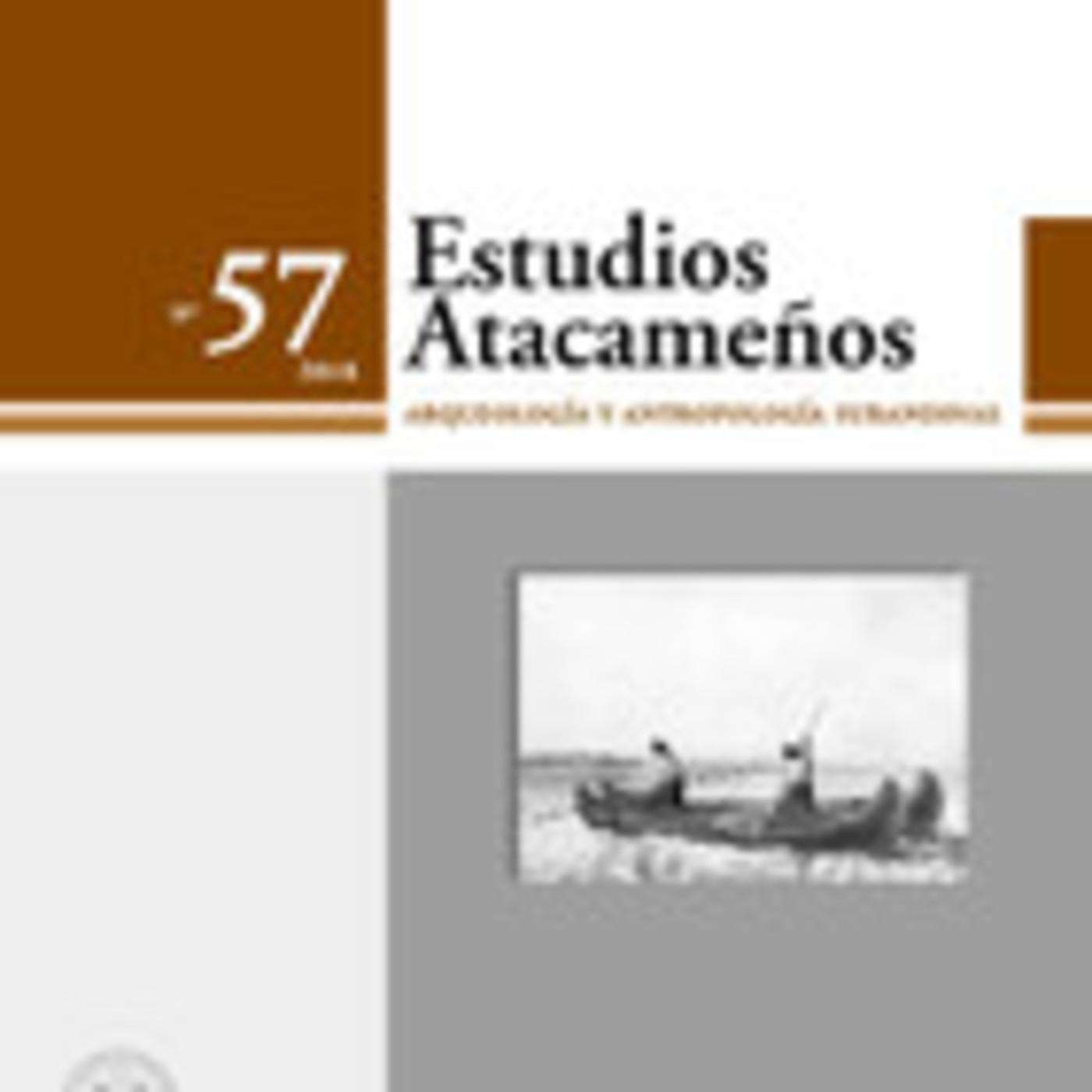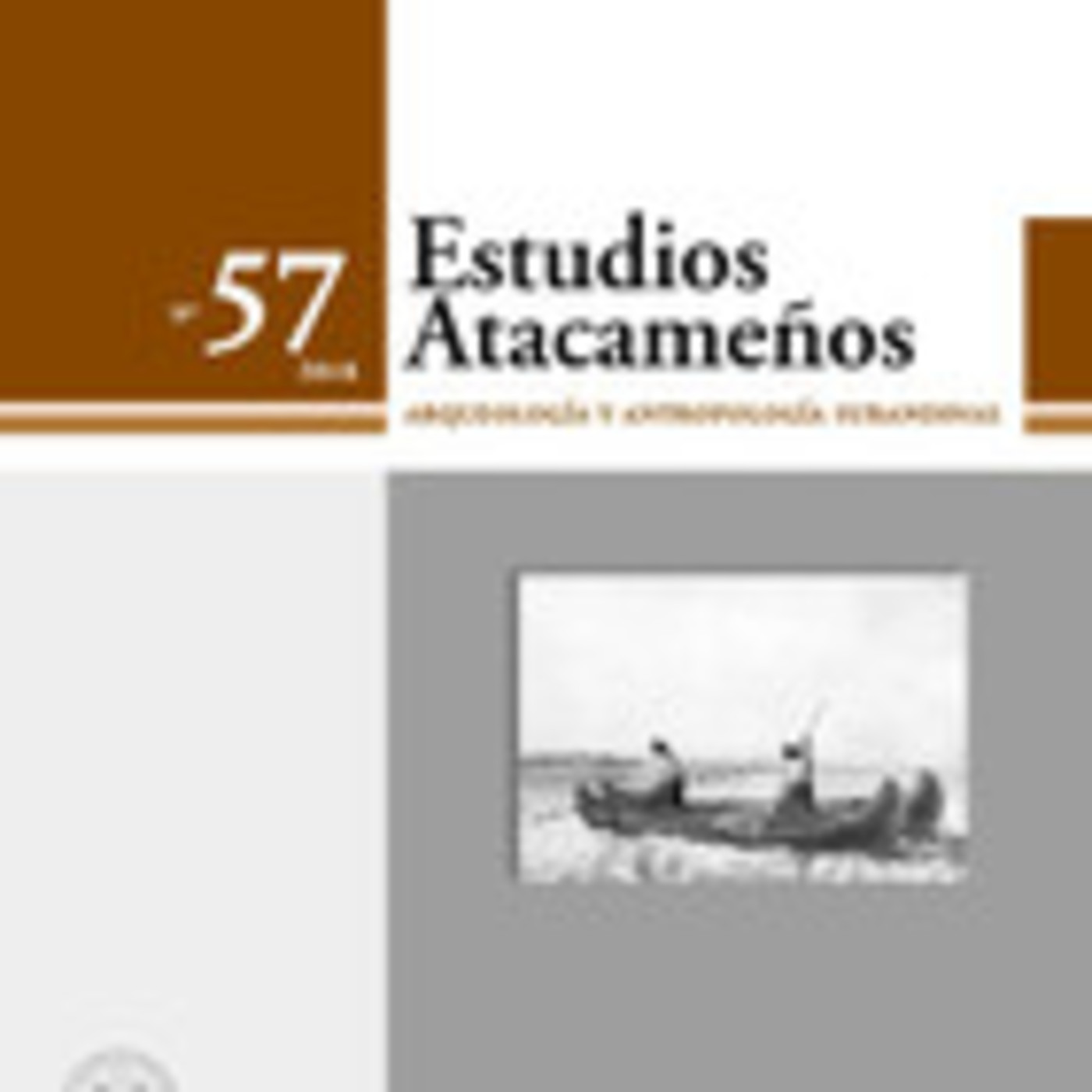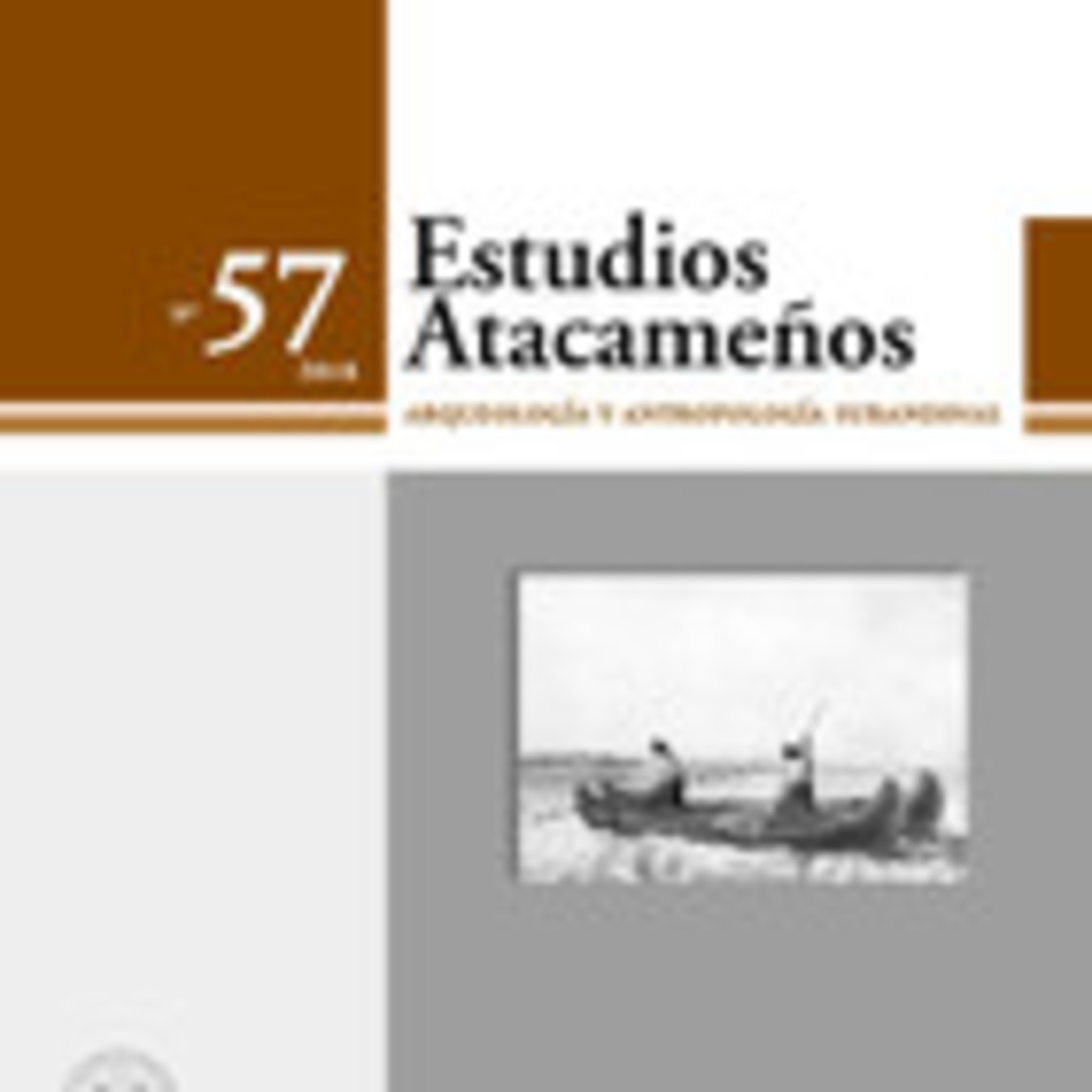Discover Estudios Atacameños
Estudios Atacameños

Estudios Atacameños
Author: Revistas UCN
Subscribed: 0Played: 2Subscribe
Share
© 2025 Revistas UCN
Description
Estudios Atacameños. Arqueología y antropología surandinas (ISSN versión impresa: 0716-0925; ISSN versión on-line: 0718-1043) fue creada el año 1973 por el R.P. Gustavo Le Paige s.j., manteniendo desde entonces continuidad en su publicación. Recibe contribuciones originales e inéditas de investigaciones científicas sobre temas de arqueología, antropología social, historia y bioantropología de la región surandina. Se aceptan contribuciones en español y en inglés, las que son evaluadas por un Comité Editorial compuesto por editores nacionales y extranjeros, además de una revisión por pares de al menos dos especialistas externos. La revista publica regularmente dos números al año y eventualmente se publican números especiales.
183 Episodes
Reverse
Autores:
Simón Urbina A., Leonor Adán A., Constanza Pellegrino H., Roberto Izaurieta S. J.
El presente trabajo sintetiza el estudio de patrones arquitectónicos residenciales y asentamientos para la región de Tarapacá entre los siglos X AC y XVII DC. La distribución, variabilidad y transformaciones de los sitios expresa una tendencia en donde los patrones formales de las estructuras domésticas resultan indicadores de cambios graduales o radicales en la organización/estructura social de las comunidades tarapaqueñas durante el período Formativo, Intermedio Tardío e Inca-Colonial. La propuesta teórica y el análisis hacen consistente el estudio inter-sitio de la arquitectura prehispánica, en ámbitos de excelente preservación superficial, utilizando una metodología estandarizada. La investigación valoriza una estrategia de trabajo interdisciplinaria y ofrece una lectura sistemática del comportamiento de la arquitectura doméstica para comprender la historia regional de los Andes Centro-Sur. Texto completo en: https://goo.gl/RPPsrT
Autor:
Xochitl G. Inostroza Ponce
La reconstitución de familias del pueblo de Belén me ha permitido acceder a aspectos demográficos escasamente estudiados en poblaciones andinas, pero también a otros fenómenos cualitativos que permiten un análisis histórico de aspectos relativos al matrimonio y el parentesco. Contar con una gran cantidad de fuentes y archivos de distinta naturaleza ha desarrollado las potencialidades metodológicas, dando acceso a la comparación de resultados a partir de los distintos documentos, promoviendo una visión crítica del análisis individual de cada una de las fuentes, así como de los resultados de los diversos métodos. La complementariedad entre ellos facilita una comprensión global de los variados aspectos que intervienen en la conformación de las familias. En el caso de Belén, la integración de registros parroquiales, revisitas y un padrón, informes eclesiásticos y pliegos matrimoniales... Texto completo en: https://goo.gl/uX9ZWi
Autora: Daniela Salvucci
Pese a la difusión de la ideología genealógica española y del modelo católico de unión y descendencia legítima que se dio a partir de la colonización, en la Argentina andina existieron y siguen existiendo “culturas” indígenas de “familia” y “parentesco”. El objetivo del texto es analizar, desde una perspectiva de la antropología cultural, las categorías émicas y las prácticas del parentesco en el altiplano de Jasimaná (provincia de Salta, Noroeste de Argentina, NOA). El método etnográfico y el estudio de caso, a partir de reconstrucciones gráficas de redes familiares, nos permitirá enfocar las dinámicas de los grupos domésticos y sacar a la luz las características culturales locales del parentesco en relación a la inserción histórico-cultural de Jasimaná en el NOA y en la macro área andina. Texto completo en: https://goo.gl/wMGHeG
Autor:
Ignacio Chuecas Saldías
Este artículo explora aspectos característicos en la conformación y articulación de las familias mapuche asentadas en la reducción fronteriza de Santa Fe (Chile) durante el siglo XVIII. Santa Fe, al igual que el resto de las reducciones emplazadas a orillas del río Biobío, representaba un espacio negociado donde las familias indígenas, que en ella residieron, desplegaron estrategias de naturaleza híbrida a fin de conservar y acrecentar su capacidad de agencia al interior del sistema colonial hispano. Entre estas estrategias resulta posible considerar los peculiares sistemas de asentamiento, las prácticas matrimoniales, la función desempeñada por los caciques gobernadores y las nociones relativas a la propiedad y ocupación del espacio. Texto completo en: https://goo.gl/X4hEgz
Autor:
Juan Pablo Ferreiro
Gregory Bateson propone como objeto y fin de sus reflexiones en Espíritu y Naturaleza la noción de “pauta que conecta”, a través de preguntas tales como ¿cuál es la pauta que conecta a todas las criaturas vivientes? Hemos escogido, como objeto de nuestro análisis, en cambio, una dimensión fractal de aquella propuesta, restringida a los vínculos desarrollados en los campos nucleares de la reproducción sociocultural. Nuestro interés es reconocer y analizar las configuraciones de algunos vínculos de parentesco y la ocupación que hace de una región delimitada espacial y temporalmente un conjunto discreto de familias campesinas indígenas. Esto es, los criterios, regularidades y tendencias que exhiben estos conjuntos en sus aspectos más básicos y primarios: aquellos que estructuran, regulan y distribuyen la reproducción social a través de la organización doméstica y las alianzas matrimoniales... Texto completo en: https://goo.gl/EkjQbJ
Autor: Federico Fernández.
En esta investigación se analiza la utilización de la categoría capital social, y sus vinculaciones posibles con los procesos de acumulación relacional y movilidad espacial entre familias extensas con residencias múltiples dentro de la región oriental de la provincia de Jujuy. La principal fuente de información con la que se ha elaborado el trabajo proviene de un conjunto de actas bautismales realizadas entre los años 1902 y 1935 por sacerdotes de la Prelatura de Humahuaca de Jujuy, sobre la población residente en la región conocida como Valle Grande. Los resultados obtenidos tras el ordenamiento y el Análisis de Redes Sociales (ARS) de los datos consignados en las actas bautismales dan cuenta de una serie de pautas vinculares factibles de ser descritas bajo la categoría de capital social familiar. Texto Completo en: https://bit.ly/2Tihetw
Autor:
Jaime Valenzuela Márquez
A lo largo del siglo XVII la guerra fronteriza en el sur de Chile se caracterizó por las razias orientadas al pillaje y captura de indios declarados legalmente esclavizables desde 1608. Deportados hacia Chile central, Coquimbo o Lima, los mapuches y huilliches meridionales se inscribirán, así, en una generalizada experiencia de desarraigo comunitario, fragmentación de redes sociales, de los vínculos territoriales y, sobre todo, destrucción de lazos familiares; marcas que acompañarán los avatares de aquellos individuos sometidos a las traumáticas experiencias del rapto violento y destierro perpetuo desde sus lugares de origen.El objetivo de este artículo es delinear los indicios de dicha fragmentación y, luego, estudiar las tendencias de recomposición –o “desfragmentación”– que se observan entre estos indígenas al vincularse en matrimonio, en el contexto urbano de la capital chilena y su comarca... Texto Completo en: https://goo.gl/BL58DU
Autores: Xochitl Inostroza, Juan Pablo Ferreiro
El dossier Familias Indígenas contiene algunas de las exposiciones que integraron el simposio “Historia de familias indígenas en perspectiva interdisciplinaria: materiales, documentos, métodos”, realizado en la Universidad de Santiago de Chile durante al año 2015, en el marco del IV Congreso Internacional de Ciencias, Tecnologías y Culturas. Por este motivo, agradecemos en primer lugar a los profesores Eduardo Devés y Fernando Estenssoro, coordinadores generales del congreso, por darnos el espacio para este encuentro que nos permitió realizar dos jornadas de diálogo y reflexión interdisciplinaria sobre la familia indígena, bajo condiciones ideales para una reunión académica, contando con tiempo suficiente para cada exposición, generando un diálogo fructífero a partir de las diferentes investigaciones. Agradecemos también a los editores de la revista Estudios Atacameños...Texto Completo en: https://bit.ly/2zl5YnR
Authors: P. Sebastián Giannotti, Daniela A. Mansegosa, Horacio D. Chiavazza.
This work studies the presence of dental caries in a sample of adult skeletons recovered from excavations carried out in the colonial temple of San Francisco-La Caridad (18th-19th centuries) in the Foundational Area of Mendoza (Argentina). Frequency, distribution and location of carious lesions in the anterior and posterior dentition of two sub-samples (teeth of primary and secondary burials) are evaluated. Each subsample could correspond to social sectors with different status. The prevalence of caries was similar among social groups, although some differences in the distribution and location of the lesions were observed. These were interpreted in relation to historical, ethnohistorical and archaeological information on diet, food preparation practices, and oral hygiene of the colonial populations from Mendoza, suggesting different lifestyles among the different socioeconomic sectors.
Author: Bettina Schorr.
This article examines significant variations between two conf licts over mining in Chile regarding the degree, the scale and the outcomes of contention: the conf licts in Chañaral where the public company Codelco operates and in the Huasco Valley (Pascua Lama) where a transnational company is in charge. While the former suffers widespread contamination caused by mining activities, opposition against mining remains low and isolated and the state barely responds to local claims. In contrast, the mining project of Pascua Lama motivated large-scale protests, reached national and international support and managed that state agencies partly acted on behalf of local claims. Three factors explain these differences: First, the local economic context, i.e. the dependency of a given place on the mining industry affects the degree and shape of contention; second, the presence of the public company, which both reduces the overall disposition to contest its activities as well as the opportunities to ‘scale-up’ contention. Moreover, state authorities tend to protect public companies that provide significant fiscal incomes; Lastly, the origin of the company (national – transnational) shapes the scale as well as the outcomes of contention over mining.
Author: Haroldo Dilla Alfonso.
Arica is part of a dense socio-historical skein that form the Chilean borders, but distinguished by the particular intensity and diversity of its fields and circuits of cross-borders relationships. Its reality as a transborder region – molded by the actions from communities, markets and states – is a peculiar interweaving of its relations with its three land borders: Bolivia, Peru and Tarapacá. And with its port, that connect the region with the Pacific Ocean and the Asian economy. This article discusses the characteristics of each one of them, the way they relate to create a distinguishable territory and the challenges that implies for the future development of the region.
Author: Bernardo Guerrero Jiménez.
At the present article the origin and development of a religious association that is introduced in La Tirana festivity in 1938 called “pieles rojas” is analyzed. It is interpreted based upon varied categories such as adaptation, translation and appropriation. Also it includes the reason why the Redskins have been included in a religious and popular festivity settled at Atacama desert. It is stated that the presence of the dancing group “chuncho” can be regarded as a previous step to the formation of this north american dancing group. We emphasize in the creative personality of the funder: Aniceto Palza Pizarro. He organizes a new religious dancing group causing, at that time, a breakdown that to present it is perceived as part of the regular development of this religious manifestation of Northern Chile.
Authors: Carlos Mondaca, Wilson Muñoz, Yeliza Gajardo, Joaquín Gairín.
The aim of this article is to describe and characterize the strategies and sociocultural insertion practices in migrant students (Peruvians and Bolivians) in schools located in the Arica and Parinacota region, Northern Chile. It is analyzed how the formal educational system has not developed institutional mechanisms of sociocultural integration that allow an appropiate insertion to foreign students in chilean schools, whereby, different social agents (students, parents and representatives) have had to display strategies and specific insertion practices adapted to the local context, generating emerging mechanisms of sociocultural integration.
Authors: Hans Gundermann, Héctor González, John Durston.
This paper deals with the issue of ethnic identity and alterity relationships’ configuration in contemporary social space in the Atacama Region, Chile. After an historical review of the relationships between the most important groups in this space, collective identities and alterity outlines are described and analyzed, to determinate the incidence of this process in the constitution of the spaces of social interaction, specially economical and social ones, where the members of this groups are involved. In those spaces, relationships underlying the social inequalities, stereotypes and prejudges, coexistence and rivality, besides opposition and inter- and intraethnic can be established.
Author:
Diego Escolar.
Centered in the caudillo Santos Guayama, this article analyses the impact of indigenous political traditions on the federalist rebelions in the Argentinean west between 1860 and 1870 decades. The Argentinean historiography doesn’t consider the significance of ethnic experiences as factors of political movilization during this period. But recent documental findings on Guanacache area, at the core of theregion, suggest the close relationship of these conflicts with political indigenous traditions of land struggle from ancient reductions.
Author: Nelson Arellano-Escudero
A business archive analysis allows knowing the process of research and developmentin the saltpeter industry in the middle of the XX century and the incorporation of the use of Solar Energy to its production processes. The study of this case discusses the evolution of technology and the theses of innovation analyzing an industrial history. The analytical course of the case of the Coya Sur solar ponds seeks tounderstand a viable alternative to hegemonic technologies by presenting new antecedents of the history of technology and its possible impact on the sustainability problem.
Authors: Pablo Lacoste, Michelle Malén Lacoste Adunka.
We study the history of ponchos, balandres and chamantos from notary and judicial sources of Colchagua and Rancagua, from the early seventeenth century to the midnineteenthcentury. This source provides relevant knowledge about the presence ofthese tissues in chilean society, its social and economic value, its historical cycles andits color characteristics. It demonstrates the deep rootedness of tissue culture within the mestizo society of the Central Valley of Chile, and its ties to the tradition of the indigenous world. The existence of the chamanto from the decade of 1820 in this region, base of the current Denomination of Origin, is demonstrated.
Author: Benjamín Ballester R.
Marine hunting was an essential activity in the way of life of the Atacama Desert littoral inhabitants, at northern Chile. A pillar in their social structure that was based in the material means to realize it, as boats and their sophisticated harpoon device, resting in the last the possibility of capture and drag main land preys that substantially out weigh the hunter. Currently the knowledge of harpooning is scarce in archaeology. For this reason we will delvein their morphology, composition, technical qualities, instrumental diversity, and chronology from a 129 harpoon heads sample from different prehistoric periods (6500 cal BP to colony).We will begin conceptually defining the harpoon function, followed by a first typological exercise to order the multiplicity of forms and solutions in a global scale to place the analyzed specimens. In a second typological exercise we will classify the local expression diversity, differentiating them materially and placing them chronologically. Only after this necessary classificatory stage we can approach to their harpoon technology, the hunter role as a social subject, and the position of hunting in the littoral society.
Authors: Valeria Franco Salvi, Rocío María Molar.
This paper proposes to discuss the results of archaeological research carried out in the northern sector of the Tafi valley, specifically focusing on evidences corresponding to the first half of the Second Millennium of the Christian Age. During this period,the agrarian landscape is segregating of house hold area which has generated several explanations in the archaeological literature of the Northwest Argentina. We came to the preliminary conclusion that the valley acquires a spatial logic, typical of this periodin the region, but would not have been caused by factors that traditional archaeology usually attribute, this are population pressure, conflict or environmental changes.
Authors: Pablo Cahiza, María Lourdes Iniesta Di Cesare, Gabriela Sabatini, María José Ots.
In this paper we propose an approach that combines perspectives on the spatiality and the materiality of the Chañarcito village community, La Rioja (600 to 800 AD). Our focus generates information on the social landscape in the eastern foothills of the Velasco Mountains, and supports the emergence of reproduction of socio-political inequalities mechanisms and practices of social interaction, represented in the construction of public spaces –platform– and the differential consumption of ceramic objects. The identification of shared uses of architectural pattern,constructive technologies and ceramic styles, contributes to the understanding on the construction of community identities in the area. The analysis is based on a local perspective that is also inserted in the regional and macro-regional context of the formative communities that developed in the second half of the first millennium.



